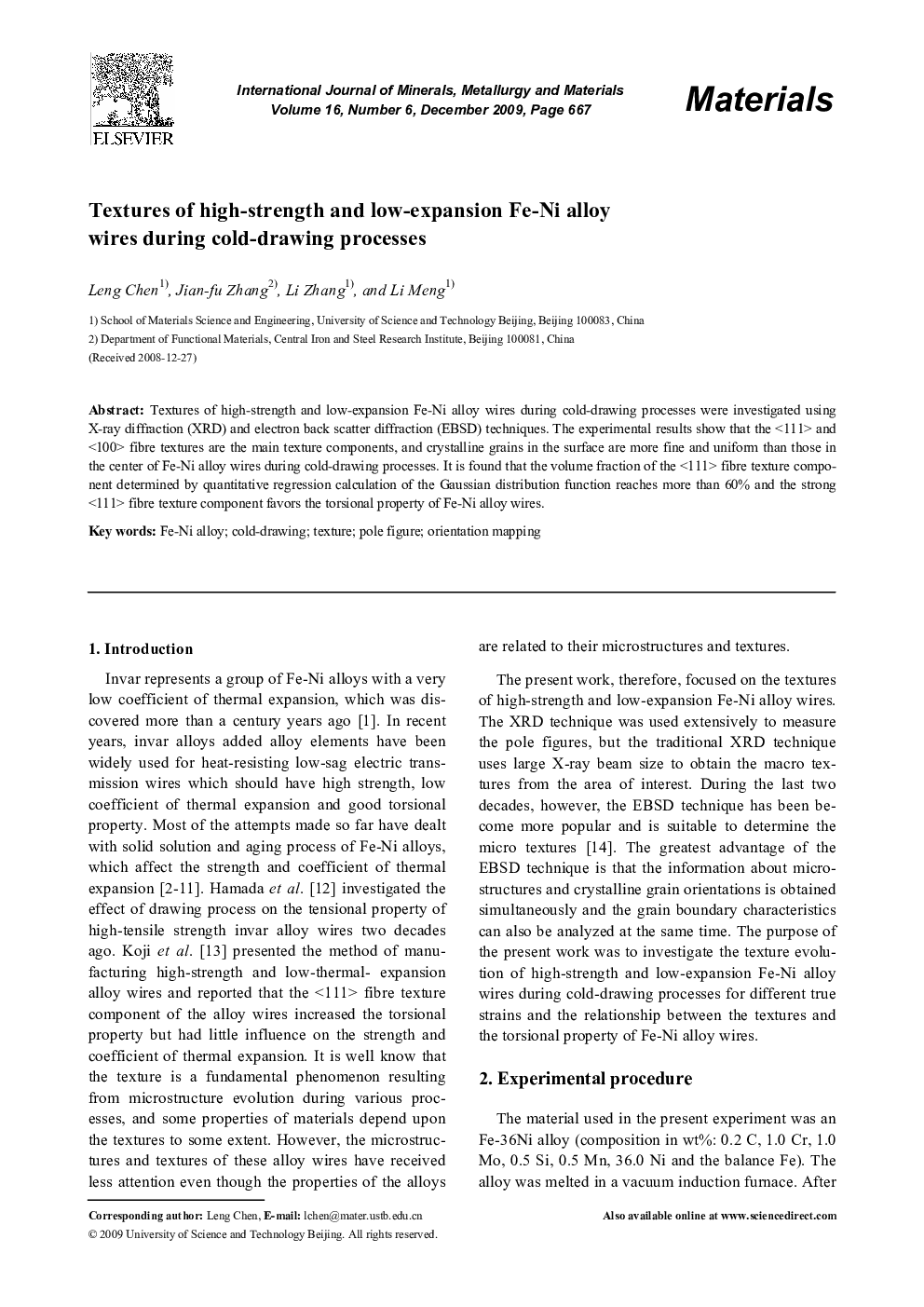| Article ID | Journal | Published Year | Pages | File Type |
|---|---|---|---|---|
| 1602374 | International Journal of Minerals, Metallurgy and Materials | 2009 | 5 Pages |
Abstract
Textures of high-strength and low-expansion Fe-Ni alloy wires during cold-drawing processes were investigated using X-ray diffraction (XRD) and electron back scatter diffraction (EBSD) techniques. The experimental results show that the <111> and <100> fibre textures are the main texture components, and crystalline grains in the surface are more fine and uniform than those in the center of Fe-Ni alloy wires during cold-drawing processes. It is found that the volume fraction of the <111> fibre texture component determined by quantitative regression calculation of the Gaussian distribution function reaches more than 60% and the strong <111> fibre texture component favors the torsional property of Fe-Ni alloy wires.
Related Topics
Physical Sciences and Engineering
Materials Science
Metals and Alloys
Authors
Leng Chen, Jian-fu Zhang, Li Zhang, Li Meng,
